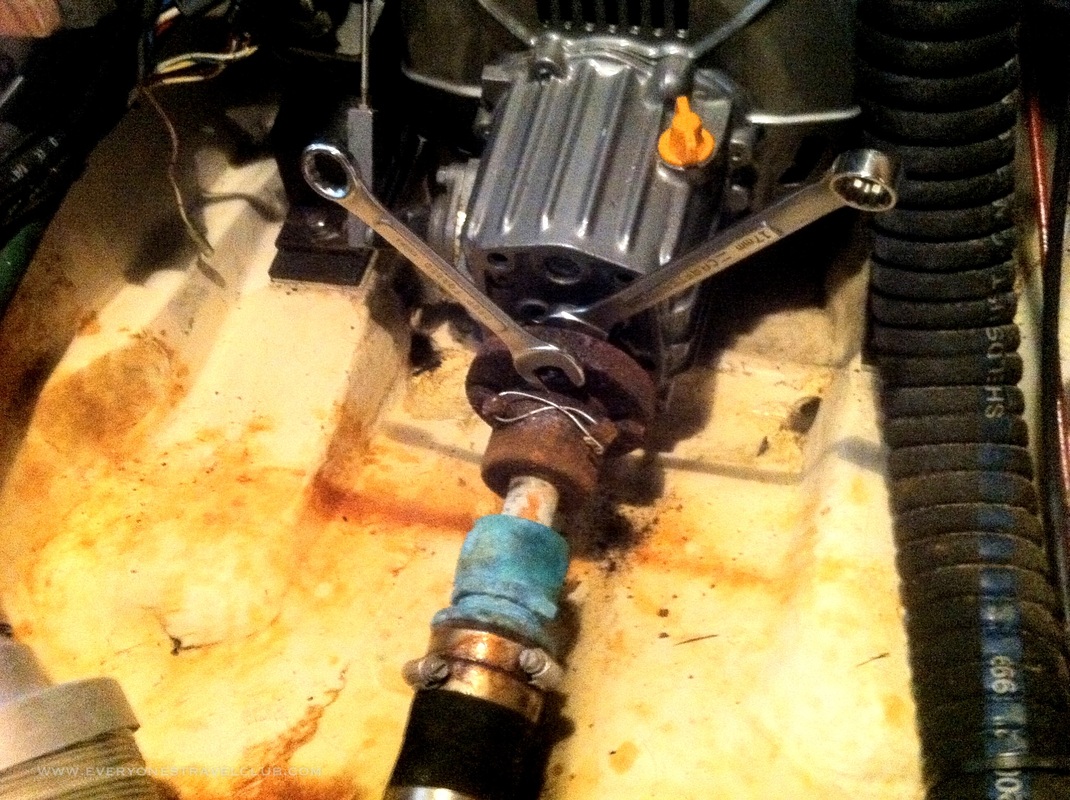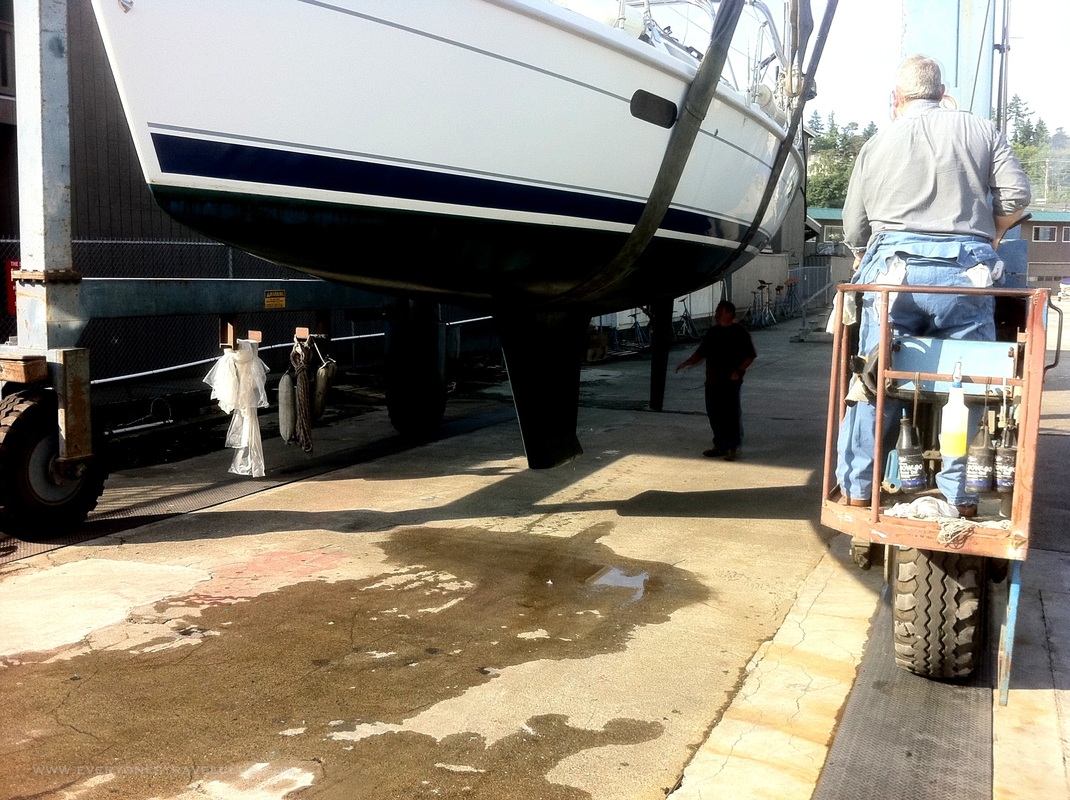|
So, we're recapping a bit - we had Kingsley hauled-out over the summer for a few days to replace her stuffing box and paint her bottom. Her last bottom paint job was in 2009 so we figured since we were going through the trouble of hauling her out we might as well get it done. This haul out was last July, we had owned her for only 2 months prior, and we had spent most of that time scrubbing the green off of her (I still find green to scrub off her). Before we get into the specifics, just know that we are new to owning and living on a sailboat and especially new to engine work so if we call a torque-thing-a-ma-bober a shaft-prop-thingy...well, our bad, sorry, we're working on it! In the pic above you can see the problem - a problem we knew we'd have to deal with eventually (even though the surveyor didn't really mention it...don't get me started). You can see the corosion and rust surrounding this whole operation here. This is in the aft cabin, underneath the aft bed. At the top of the picture is our engine, followed by the coupling that connects our transmission to the shaft (long pole thingy that goes through the boat and out to the propellor). The stuffing box and tubing is the coroded blue thingy in the center of the pic, and is there to allow the shaft to rotate and prevent large amounts of water from getting in (little drips when using the engine are ok and expected). To our non-boat owner/engine pros out there: does that make sense? This is everyone's travel club after all! In the most basic sense, the engine on our boat is on the inside and the propellor that spins and makes the boat go is on the outside (underwater). The propellor spins on the end of a long pole (shaft) which is connected (through the hull of the boat) to the transmission/engine. The stuffing box is 'wrapped' around the shaft on the inside, allowing this all to go down without letting tons of water in. I've read that a lot of boat owners replace or repack their stuffing boxes every time they haul-out, some do it while the boat is in the water (sounds tricky). The problem with our situation is that the moisture hadn't been monitored by the previous owner and he left the box alone for 10 years! Thus, the saltwater caused some serious corrosion and rust (of the coupling - the thing in the picture with the wrenches on it). Well, it wasn't easy, but we eventually got the coupling off. Yeah, those wrenches in the pic earlier, they didn't even come close - we had to cut the whole thing off and replace it. Unfortunately the new coupling barely fit, like didn't fit by a tenth of an inch, but it eventually worked out with lots of sanding and scratching our heads. We added a new dripless PSS (Packless Sealing System) stuffing box, apparently they're all the rage, and Kingsley was almost ready to go! All that was left was a few little things - we added a grate on the outside of the boat to the raw water intake (hole in the bottom of the boat that sea water gets sucked in to cool the engine while it's running), waxed the topsides, changed the zincs and added one more near the shaft, added our new tags and WN # decals up on the bow, and took off the grey racing stripes and old Hunter 320 lettering from the sides. It's been 4 months since all of the work and we are glad to report total dryness in the area we worked on...good to go. Kingsley, you owe us big-time!
Paul, John, Tom, ETC
0 Comments
Leave a Reply. |
Categories
All
We hope you've enjoyed the time you've spent on our site. All images, text and designs are copyright Everyone's Travel Club and may not be used without written permission from us. Email us!
Archives
August 2022
|
|
|
Connect:Contact: |
[email protected] |
















 RSS Feed
RSS Feed

